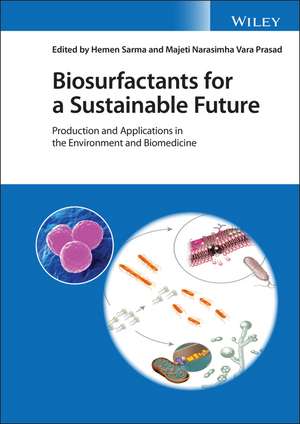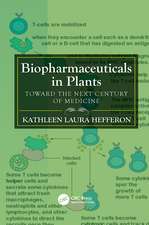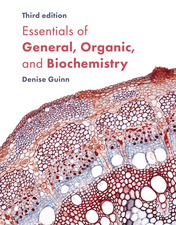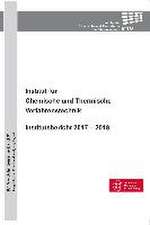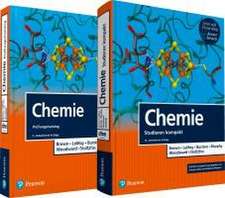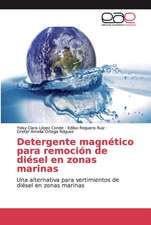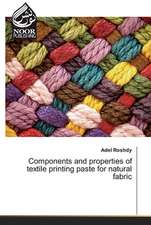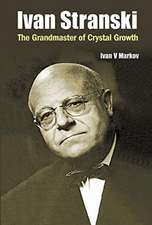Biosurfactants for a Sustainable Future – Production and Applications in the Environment and Biomedicine
Autor H Sarmaen Limba Engleză Hardback – 12 mai 2021
Biosurfactants for a Sustainable Future explores recent developments in biosurfactants and their use in a variety of cutting-edge applications. The book opens a window on the rapid development of microbiology by explaining how microbes and their products are used in advanced medical technology and in the sustainable remediation of emerging environmental contaminants.
The book emphasizes the different techniques that are used for the production of biosurfactants from microorganisms and their characterization. Various aspects of biosurfactants, including structural characteristics, developments, production, bio-economics and their sustainable use in the environment and biomedicine, are addressed, and the book also presents metagenomic strategies to facilitate the discovery of novel biosurfactants producing microorganisms. Readers will benefit from the inclusion of:
- A thorough introduction to the state-of-the-art in biosurfactant technology, techniques, and applications
- An exploration of biosurfactant enhanced remediation of sediments contaminated with organics and inorganics
- A discussion of perspectives for biomedical and biotechnological applications of biosurfactants
- A review of the antiviral, antimicrobial, and antibiofilm potential of biosurfactants against multi-drug-resistant pathogens.
- An examination of biosurfactant-inspired control of methicillin-resistant Staphylococcus aureus
Preț: 1328.17 lei
Preț vechi: 1459.52 lei
-9% Nou
Puncte Express: 1992
Preț estimativ în valută:
254.18€ • 262.58$ • 211.54£
254.18€ • 262.58$ • 211.54£
Carte tipărită la comandă
Livrare economică 25 martie-08 aprilie
Preluare comenzi: 021 569.72.76
Specificații
ISBN-13: 9781119671008
ISBN-10: 1119671000
Pagini: 544
Dimensiuni: 183 x 259 x 36 mm
Greutate: 1.17 kg
Editura: Wiley
Locul publicării:Chichester, United Kingdom
ISBN-10: 1119671000
Pagini: 544
Dimensiuni: 183 x 259 x 36 mm
Greutate: 1.17 kg
Editura: Wiley
Locul publicării:Chichester, United Kingdom
Cuprins
List of Contributors xii
Preface xvii
1 Introduction to Biosurfactants 1
José Vázquez Tato, Julio A. Seijas, M. Pilar Vázquez-Tato, Francisco Meijide,Santiago de Frutos, Aida Jover, Francisco Fraga, and Victor H. Soto
1.1 Introduction and Historical Perspective 1
1.2 Micelle Formation 5
1.3 Average Aggregation Numbers 14
1.4 Packing Properties of Amphiphiles 18
1.5 Biosurfactants 20
1.6 Sophorolipids 25
1.7 Surfactin 28
1.8 Final Comments 31
Acknowledgement 32
References 32
2 Metagenomics Approach for Selection of Biosurfactant Producing Bacteria from Oil Contaminated Soil: An Insight Into Its Technology 43
Nazim F. Islam and Hemen Sarma
2.1 Introduction 43
2.2 Metagenomics Application: A State-of-the-Art Technique 44
2.3 Hydrocarbon-Degrading Bacteria and Genes 46
2.4 Metagenomic Approaches in the Selection of Biosurfactant-Producing Microbes 47
2.5 Metagenomics with Stable Isotope Probe (SIP) Techniques 48
2.6 Screening Methods to Identify Features of Biosurfactants 50
2.7 Functional Metagenomics: Challenge and Opportunities 52
2.8 Conclusion 53
Acknowledgements 54
References 54
3 Biosurfactant Production Using Bioreactors from Industrial Byproducts 59
Arun Karnwal
3.1 Introduction 59
3.2 Significance of the Production of Biosurfactants from Industrial Products 60
3.3 Factors Affect Biosurfactant Production in Bioreactor 61
3.4 Microorganisms 61
3.5 Bacterial Growth Conditions 63
3.6 Substrate for Biosurfactant Production 65
3.7 Conclusions 71
Acknowledgement 71
References 72
4 Biosurfactants for Heavy Metal Remediation and Bioeconomics 79
Shalini Srivastava, Monoj Kumar Mondal, and Shashi Bhushan Agrawal
4.1 Introduction 80
4.2 Concept of Surfactant and Biosurfactant for Heavy Metal Remediation 81
4.3 Mechanisms of Biosurfactant-Metal Interactions 82
4.4 Substrates Used for Biosurfactant Production 82
4.5 Classification of Biosurfactants 85
4.6 Types of Biosurfactants 85
4.7 Factors Influencing Biosurfactants Production 88
4.8 Strategies for Commercial Biosurfactant Production 89
4.9 Application of Biosurfactant for Heavy Metal Remediation 90
4.10 Bioeconomics of Metal Remediation Using Biosurfactants 93
4.11 Conclusion 94
References 94
5 Application of Biosurfactants for Microbial Enhanced Oil Recovery (MEOR) 99
Jéssica Correia, Lígia R. Rodrigues, José A. Teixeira, and Eduardo J. Gudiña
5.1 Energy Demand and Fossil Fuels 99
5.2 Microbial Enhanced Oil Recovery (MEOR) 101
5.3 Mechanisms of Surfactant Flooding 102
5.4 Biosurfactants: An Alternative to Chemical Surfactants to Increase Oil Recovery 103
5.5 Biosurfactant MEOR: Laboratory Studies 104
5.6 Field Assays 112
5.7 Current State of Knowledge, Technological Advances, and Future Perspectives 113
Acknowledgements 114
References 114
6 Biosurfactant Enhanced Sustainable Remediation of Petroleum Contaminated Soil 119
Pooja Singh, Selvan Ravindran, and Yogesh Patil
6.1 Introduction 119
6.2 Microbial-Assisted Bioremediation of Petroleum Contaminated Soil 121
6.3 Hydrocarbon Degradation and Biosurfactants 122
6.4 Soil Washing Using Biosurfactants 124
6.5 Combination Strategies for Efficient Bioremediation 126
6.6 Biosurfactant Mediated Field Trials 129
6.7 Limitations, Strategies, and Considerations of Biosurfactant-Mediated
Petroleum Hydrocarbon Degradation 130
6.8 Conclusion 132
References 133
7 Microbial Surfactants are Next-Generation Biomolecules for Sustainable Remediation of Polyaromatic Hydrocarbons 139
Punniyakotti Parthipan, Liang Cheng, Aruliah Rajasekar, and Subramania Angaiah
7.1 Introduction 139
7.2 Biosurfactant-Enhanced Bioremediation of PAHs 144
7.3 Microorganism's Adaptations to Enhance Bioavailability 151
7.4 Influences of Micellization on Hydrocarbons Access 151
7.5 Accession of PAHs in Soil Texture 152
7.6 The Negative Impact of Surfactant on PAH Degradations 152
7.7 Conclusion and Future Directions 153
References 153
8 Biosurfactants for Enhanced Bioavailability of Micronutrients in Soil: A Sustainable Approach 159
Siddhartha Narayan Borah, Suparna Sen, and Kannan Pakshirajan
8.1 Introduction 159
8.2 Micronutrient Deficiency in Soil 161
8.3 Factors Affecting the Bioavailability of Micronutrients 161
8.4 Effect of Micronutrient Deficiency on the Biota 163
8.5 The Role of Surfactants in the Facilitation of Micronutrient Biosorption 166
8.6 Surfactants 166
8.7 Conclusion 173
References 174
9 Biosurfactants: Production and Role in Synthesis of Nanoparticles for Environmental Applications 183
Ashwini N. Rane, S.J. Geetha, and Sanket J. Joshi
9.1 Nanoparticles 183
9.2 Synthesis of Nanoparticles 184
9.3 Biosurfactants 187
9.4 Biosurfactant Mediated Nanoparticles Synthesis 191
9.5 Challenges in Environmental Applications of Nanoparticles and Future Perspectives 196
Acknowledgements 197
References 197
10 Green Surfactants: Production, Properties, and Application in Advanced Medical Technologies 207
Ana María Marqués, Lourdes Pérez, Maribel Farfán, and Aurora Pinazo
10.1 Environmental Pollution and World Health 207
10.2 Amino Acid-Derived Surfactants 208
10.3 Biosurfactants 213
10.4 Antimicrobial Resistance 219
10.5 Catanionic Vesicles 223
10.6 Biosurfactant Functionalization: A Strategy to Develop Active Antimicrobial Compounds 234
10.7 Conclusions 235
References 235
11 Antiviral, Antimicrobial, and Antibiofilm Properties of Biosurfactants: Sustainable Use in Food and Pharmaceuticals 245
Kenia Barrantes, Juan José Araya, Luz Chacón, Rolando Procupez-Schtirbu, Fernanda Lugo, Gabriel Ibarra, and Víctor H. Soto
11.1 Introduction 245
11.2 Antimicrobial Properties 246
11.3 Biofilms 252
11.4 Antiviral Properties 255
11.5 Therapeutic and Pharmaceutical Applications of Biosurfactants 256
11.6 Biosurfactants in the Food Industry: Quality of the Food 258
11.7 Conclusions 260
Acknowledgements 261
References 261
12 Biosurfactant-Based Antibiofilm Nano Materials 269
Sonam Gupta
12.1 Introduction 269
12.2 Emerging Biofilm Infections 270
12.3 Challenges and Recent Advancement in Antibiofilm Agent Development 272
12.4 Impact of Extracellular Matrix and Their Virulence Attributes 273
12.5 Role of Indwelling Devices in Emerging Drug Resistance 274
12.6 Role of Physiological Factors (Growth Rate, Biofilm Age, Starvation) 274
12.7 Impact of Efflux Pump in Antibiotic Resistance Development 275
12.8 Nanotechnology-Based Approaches to Combat Biofilm 276
12.9 Biosurfactants: A Promising Candidate to Synthesize Nanomedicines 277
12.10 Synthesis of Nanomaterials 278
12.11 Self-Nanoemulsifying Drug Delivery Systems (SNEDDs) 282
12.12 Biosurfactant-Based Antibiofilm Nanomaterials 283
12.13 Conclusions and Future Prospects 283
Acknowledgement 285
References 285
13 Biosurfactants from Bacteria and Fungi: Perspectives on Advanced Biomedical Applications 293
Rashmi Rekha Saikia, Suresh Deka, and Hemen Sarma
13.1 Introduction 293
13.2 Biomedical Applications of Biosurfactants: Recent Developments 295
13.3 Conclusion 307
Acknowledgements 307
References 307
14 Biosurfactant-Inspired Control of Methicillin-Resistant Staphylococcus aureus (MRSA) 317
Amy R. Nava
14.1 Staphylococcus aureus, MRSA, and Multidrug Resistance 317
14.2 Biosurfactant Types Commonly Utilized Against S. aureus and Other Pathogens 318
14.3 Properties of Efficient Biosurfactants Against MRSA and Bacterial Pathogens 319
14.4 Uses for Biosurfactants 320
14.5 Biosurfactants Illustrating Antiadhesive Properties against MRSA Biofilms 320
14.6 Biosurfactants with Antibiofilm and Antimicrobial Properties 322
14.7 Media, Microbial Source, and Culture Conditions for Antibiofilm and Antimicrobial Properties 323
14.8 Novel Synergistic Antimicrobial and Antibiofilm Strategies Against MRSA and S. aureus 326
14.9 Novel Potential Mechanisms of Antimicrobial and Antibiofilm Properties 328
14.10 Conclusion 330
References 332
15 Exploiting the Significance of Biosurfactant for the Treatment of Multidrug-Resistant Pathogenic Infections 339
Sonam Gupta and Vikas Pruthi
15.1 Introduction 339
15.2 Microbial Pathogenesis and Biosurfactants 340
15.3 Bio-Removal of Antibiotics Using Probiotics and Biosurfactants Bacteria 342
15.4 Antiproliferative, Antioxidant, and Antibiofilm Potential of Biosurfactant 343
15.5 Wound Healing Potential of Biosurfactants 344
15.6 Conclusion and Future Prospects 345
References 346
16 Biosurfactants Against Drug-Resistant Human and Plant Pathogens: Recent Advances 353
Chandana Malakar and Suresh Deka
16.1 Introduction 353
16.2 Environmental Impact of Antibiotics 354
16.3 Pathogenicity of Antibiotic-Resistant Microbes on Human and Plant Health 356
16.4 Role of Biosurfactants in Combating Antibiotic Resistance: Challenges and Prospects 360
16.5 Conclusion 364
Acknowledgements 365
References 365
17 Surfactant- and Biosurfactant-Based Therapeutics: Structure, Properties, and Recent Developments in Drug Delivery and Therapeutic Applications 373
Anand K. Kondapi
17.1 Introduction 374
17.2 Determinants and Forms of Surfactants 374
17.3 Structural Forms of Surfactants 377
17.4 Drug Delivery Systems 381
17.5 Different Types of Biosurfactants Used for Drug Delivery 384
17.6 Conclusions 391
References 392
18 The Potential Use of Biosurfactants in Cosmetics and Dermatological Products: Current Trends and Future Prospects 397
Zarith Asyikin Abdul Aziz, Siti Hamidah Mohd Setapar, Asma Khatoon, and Akil Ahmad
18.1 Introduction 397
18.2 Properties of Biosurfactants 399
18.3 Biosurfactant Classifications and Potential Use in Cosmetic Applications 401
18.4 Dermatological Approach of Biosurfactants 406
18.5 Cosmetic Formulation with Biosurfactant 409
18.6 Safety Measurement Taken for Biosurfactant Applications in Dermatology and Cosmetics 412
18.7 Conclusion and Future Perspective 415
Acknowledgement 415
References 415
19 Cosmeceutical Applications of Biosurfactants: Challenges and Prospects 423
Káren Gercyane Oliveira Bezerra and Leonie Asfora Sarubbo
19.1 Introduction 423
19.2 Cosmeceutical Properties of Biosurfactants 424
19.3 Other Activities 429
19.4 Application Prospects 432
19.5 Biosurfactants in the Market 433
19.6 Challenges and Conclusion 434
References 436
20 Biotechnologically Derived Bioactive Molecules for Skin and Hair-Care Application 443
Suparna Sen, Siddhartha Narayan Borah, and Suresh Deka
20.1 Introduction 443
20.2 Surfactants in Cosmetic Formulation 445
20.3 Biosurfactants in Cosmetic Formulations 445
20.4 Conclusion 457
References 457
21 Biosurfactants as Biocontrol Agents Against Mycotoxigenic Fungi 465
Ana I. Rodrigues, Eduardo J. Gudiña, José A. Teixeira, and Lígia R. Rodrigues
21.1 Mycotoxins 465
21.2 Aflatoxins 466
21.3 Deoxynivalenol 467
21.4 Fumonisins 468
21.5 Ochratoxin A 468
21.6 Patulin 470
21.7 Zearalenone 470
21.8 Prevention and Control of Mycotoxins 471
21.9 Biosurfactants 472
21.10 Glycolipids 473
21.11 Lipopeptides 474
21.12 Antifungal Activity of Glycolipid Biosurfactants 474
21.13 Antifungal and Antimycotoxigenic Activity of Lipopeptide Biosurfactants 475
21.14 Opportunities and Perspectives 482
Acknowledgements 483
References 483
22 Biosurfactant-Mediated Biocontrol of Pathogenic Microbes of Crop Plants 491
Madhurankhi Goswami and Suresh Deka
22.1 Introduction 491
22.2 Biosurfactant: Properties and Types 492
22.3 Biosurfactant in Agrochemical Formulations for Sustainable Agriculture 502
22.4 Biosurfactants for a Greener and Safer Environment 503
22.5 Conclusion 503
References 504
Index 510
Notă biografică
Hemen Sarma is Assistant Professor at Nanda Nath Saikia College in Assam, India. His research focus is on plant- microbiome interactions, biosurfactants, persistent organic and inorganic pollutants, sustainable remediation, molecular breeding, CRISPR/cas9 gene editing and nanobiotechnology. Majeti Narasimha Vara Prasad is Emeritus Professor in the School of Life Sciences at the University of Hyderabad in India. He has published over 216 papers in scholarly journals and edited 34 books. He received his doctorate in Botany from Lucknow University, India in 1979. Based on an independent study by Stanford University scientists in 2020, he figured in the top 2% of scientists from India, ranked number 1 in Environmental Sciences (116 in world).
